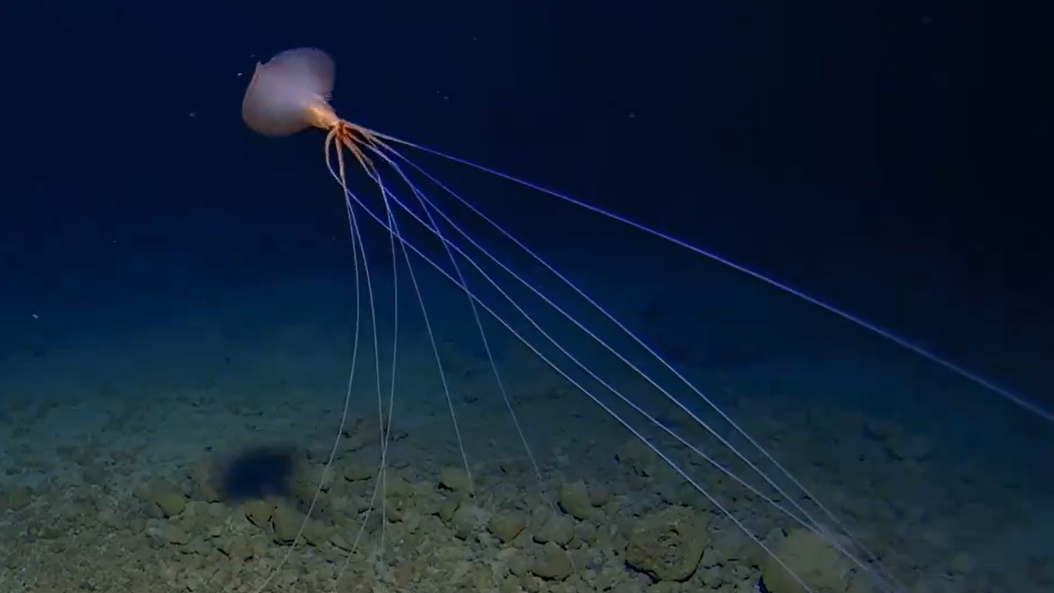Cameras at the bottom of the Tonga Trench in the South Pacific have captured rare footage of a bigfin squid with spindly arms that stretch several feet long, a new video shows.
Bigfin squid (Magnapinna) are an extremely elusive type of cephalopod — a group that also includes octopus and cuttlefish — with only around a dozen sightings on record. They are the deepest-dwelling species of squid known to science, surviving at depths of more than 20,000 feet (6,100 meters), according to the Ocean Conservancy.
The new footage is from 10,800 feet (3,300 m) beneath the ocean surface. Researchers spotted the squid by chance while exploring the trench, and they say it was a lucky encounter.
“We always hope to see this type of animal,” Alan Jamieson, a professor and deep-sea scientist at the University of Western Australia who collected the footage, told Live Science in an email. “[Bigfin squid] are not something you would actively go looking for, they are a species that relies on us coming across them by accident,” Jamieson said.
Most documented bigfin squid sightings are “serendipitous filming from oil and gas activities,” Jamieson said.
Related: Rare video shows elusive deep-sea squid cradling her gigantic, translucent eggs
The squid in the new video was probably feeding or attempting to feed, he said. The footage shows the otherworldly animal walking slowly along the seafloor before suddenly stopping and pulsing the big fins attached to its body. Although it looks like the squid is tugging on something off camera, it’s likely just trying to pull its sticky arms off the seafloor, Jamieson said.
Researchers estimate that the squid’s body is 8 to 12 inches (20 to 30 centimeters) long. Its arms stretched several times that length and looked “extremely disproportionate,” Jamieson said. Scientists think bigfin squid can grow up to 26 feet (8 m) long, including the arms.
Why bigfin squid evolved such long, spindly arms remains a mystery, Jamieson said, but it’s probably related to feeding. Bigfin squid are the only squid known to live at hadal depths — between 19,700 and 36,000 feet (6,000 to 11,000 m) deep — where food is scarce and mostly comes in the form of particles falling from above.
To solve the mystery, scientists first need to know more about the squid themselves. “The trick is to keep filming everything else that’s going on and eventually, if you are lucky, one will grace you with its presence,” Jamieson said.


